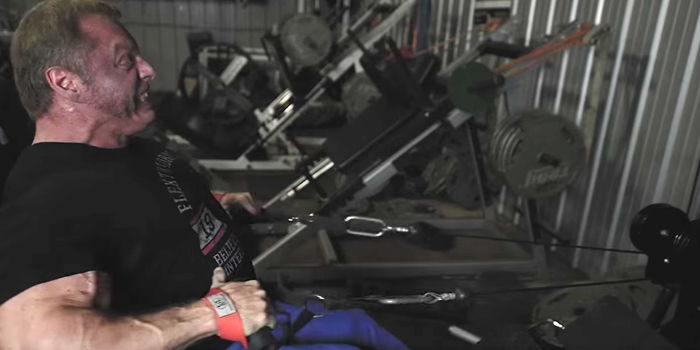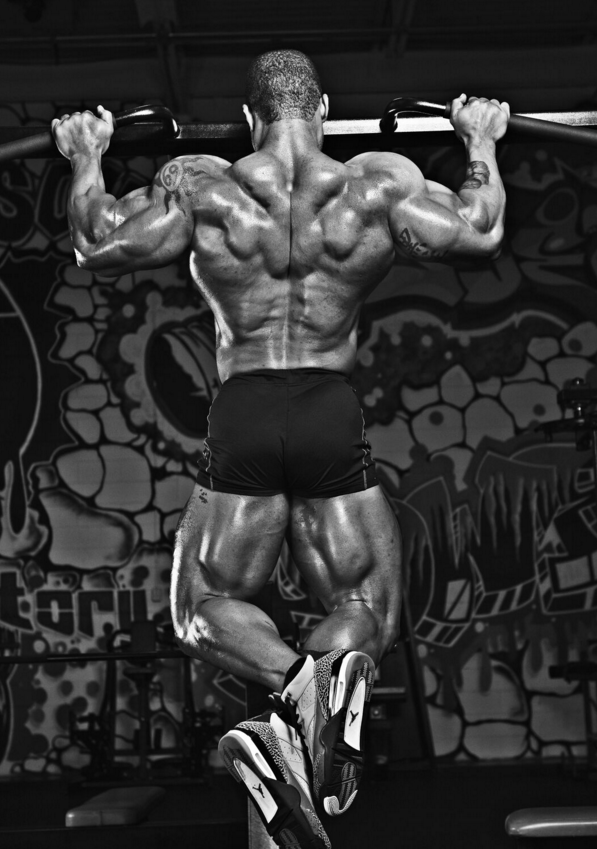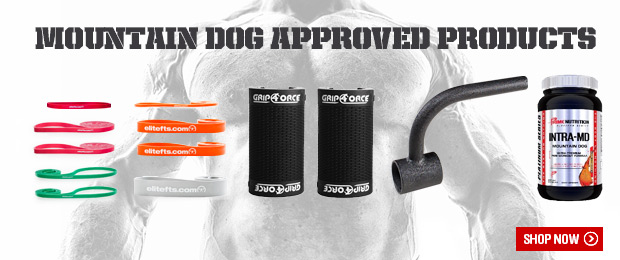
For elitefts advisor John Meadows, back training started as a mystery. Years ago, John considered his back a weak point and, as a result, has made sure to prioritize it in more recent years. To do so, he utilized the basics: barbell rows, chinups, and deadlifts. But even with these great exercises, nothing seemed to grow. When the results still seemed minimal and his other bodyparts began to outgrow his back, he had to get creative. John's Mountain Dog back training philosophy is a result of that brutal creativity, and it will take your back from flat to stacked.
Mountain Dog Back Training Principles:
1. Row First
2. Stretch Movement Second
3. Trap and Rhomboids
4. Spinal Erectors Last
5. Relentless Brutality and Creativity
Let's start with principle number one and work through each principle in the order that you'll perform them during a Mountain Dog back training session.
RECENT: Music As A Performance Enhancer
1. Row First
John begins with rows simply due to the fact they are hard. Rows take a great deal of energy to do and, coupled with the fact that they are an undeniable mass builder, John wants them done right. What type of rowing should be done? Here are some awesome examples:
John swears that this movement and the standard Meadows Row (no block) has put more size and detail on his lats than anything else. Using the Meadows Single Row Handle fine tunes this movement even more for complete lat activation.
A simple movement combined with a much better range of motion results in lower weight, a humbled ego, and crazy lat gains.
This exercise is your standard one arm dumbbell row with a slight tweak. Ditch the bench and support yourself with a dumbbell rack and a split stance. This helps pre-stretch your lat and therefore leads to a greater contraction.
Admittedly, the machine needed for this is hard to find, but if you have access to one...oh boy. This movement is great for a number of reasons. The bent-over position and direction of the pull helps place the scapulas into posterior tilt, which in turns causes them to sit properly on the ribs. This is great for your shoulder health as well as your lat development. The staggered stance adds to the stretch and contraction.
2. Stretch Movement
Doing a stretch-type movement second in your training is brilliant for multiple reasons. Firstly, stretch movements can be dangerous when done on unpumped muscles. A cold muscular environment combined with heavy weight and big ego is a recipe for disaster, so doing these movements as a secondary exercise is a necessity. Secondly, these exercises are known for providing a painful pump. Those in-the-know on intra-workout nutrition understand that an intake of vital amino acids and carbohydrates during your workout allows for optimal muscular nutrient uptake. Your back will have been primed from the first exercise and nutrients will have begun their journey into the muscle cells. Imagine using a tire pump to inflate your lats with nutrient-rich blood. That is what this will feel like.
This is a classic stretch technique used by Meadows to drive unbelievable amounts of blood in his lats. The use of an incline bench eliminates momentum and also puts his elbows in the prime location for lat activation. Using the 4" Cable Grenade Ball simulates using a dumbbell, and it's even more comfortable on your hands.
You better mentally prepare for this pump, because it's going to hurt. Using bands creates immense tension on your lat while it's in the strongest position, while giving way on the stretch (but still not releasing you from it's elastic tension grip!)
Another great stretching movement. Not only will you get a nice stretch at the top of the movement, but cranking on the Tsunami Bar at the bottom will squeeze your shoulder blades together and induce immense mid-back contraction.
WATCH: High Volume Back Training with Dave Tate and John Meadows (Full Training Included)
3. Traps and Rhomboids
Traps and rhomboids can really be trained at any time, but they conveniently sit nicely in your third movement slot. Traps can be finicky to train due to their stimulus preferences. Rhomboids are critical to a healthy posture, so be sure not to neglect them.
In John's experience, traps need relatively little stimulus in order to grow. But when John does hit them, he hammers them. John has learned that traps respond better to hard contractions rather than heavy weights. Bands create a ton of tension at the top of the movement, and attaching them to the pegs on a power rack makes things easy to set up. Make sure to shrug up and back and hold for three seconds. Your traps will be on fire in no time. Try doing sets of 12-15.
The article explaining this movement says it all:
"First, it removes unwanted pressure off the lower back by supporting a simulated "bent over" position. Secondly, by supporting the torso and upper body, the lifter is able to produce more force with every repetition in the row. Finally, the angle of the incline will assist the lifter in recruiting more muscle involvement with the traps and rhomboids."
This movement is very similar to the one above but with the introduction of chains and grenades.
4. Spinal Erectors Last
This movement is a killer use of the good ol' SS Yoke Bar. The lifter starts in a neutral spinal position, and maintains this position through the movement (focusing on keeping the hips locked in place can help). The upper back is rounded in a controlled fashion into a deep forward stretch, held in the stretch position for at least two seconds, and then slowly reversed to the starting position by arching, with maintaining tightness and attempting to drive the head rearward into the traps the main focuses. A strong contraction in the upper back should be the goal at this point. This exercise is a slow, controlled movement that focuses on the stretch and contraction, and should not be rushed.
Training deadlifts after everything else may result in the use of lighter weight, but if you're training Mountain Dog style, you know to leave your ego at the door. Pumped back muscles are like greased gear parts and these will feel great.
5. Relentless Brutality and Creativity
Last point but definitely not the least: brutality and creativity. This is the key. John has had to get creative throughout his career, and so should you. This whole article is a compilation of principles with examples, but is not an end-all/be-all to Mountain Dog back training. Find what works for you, learn why it works, execute the movements perfectly and push yourself.
Photos courtesy of Jeffrey Sygo at www.symiphotography.com












2 Comments